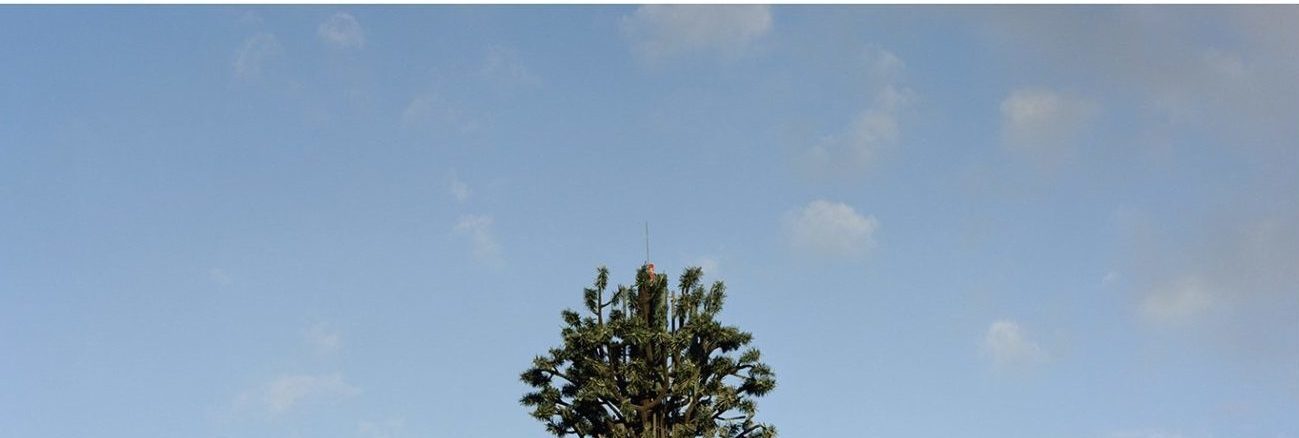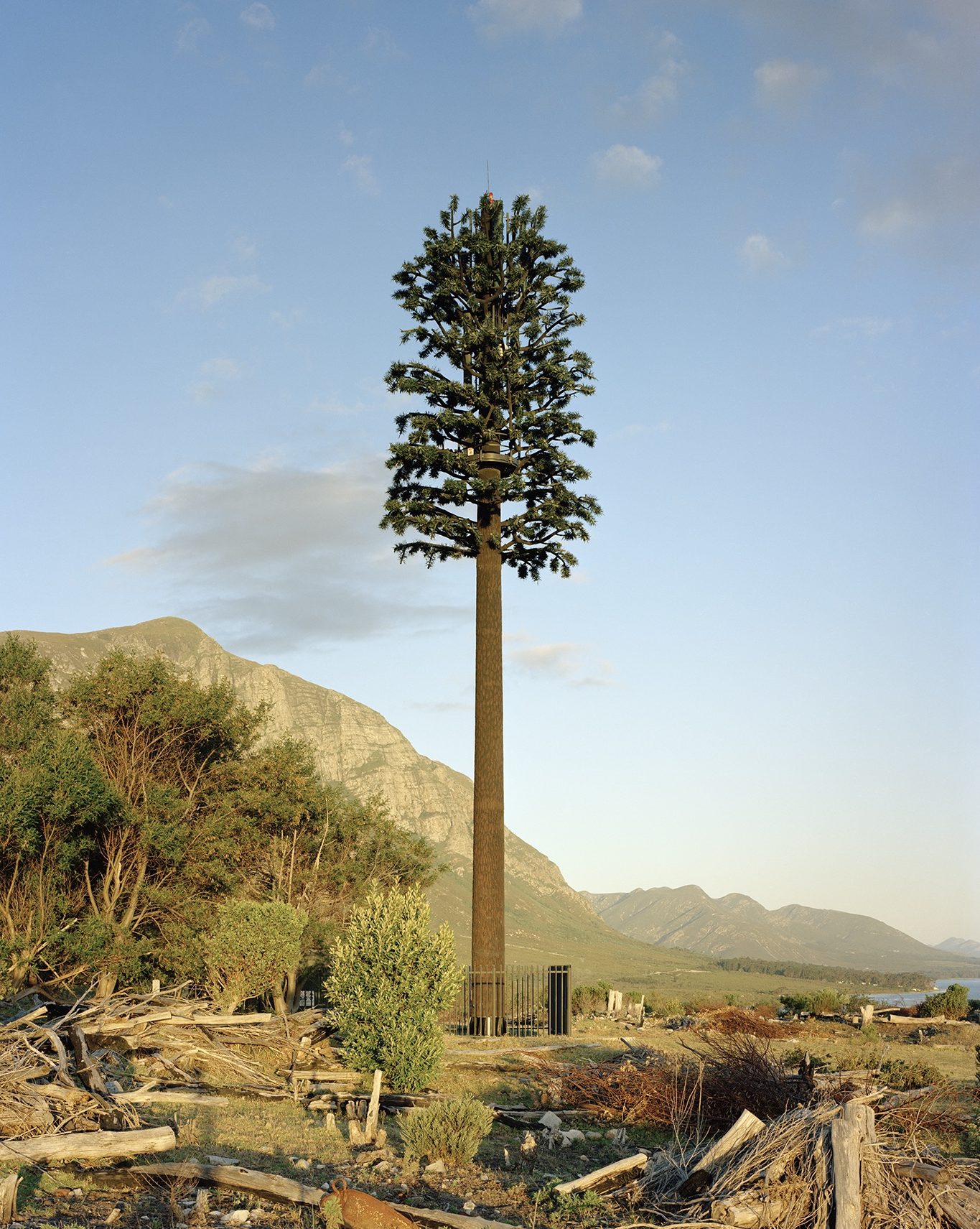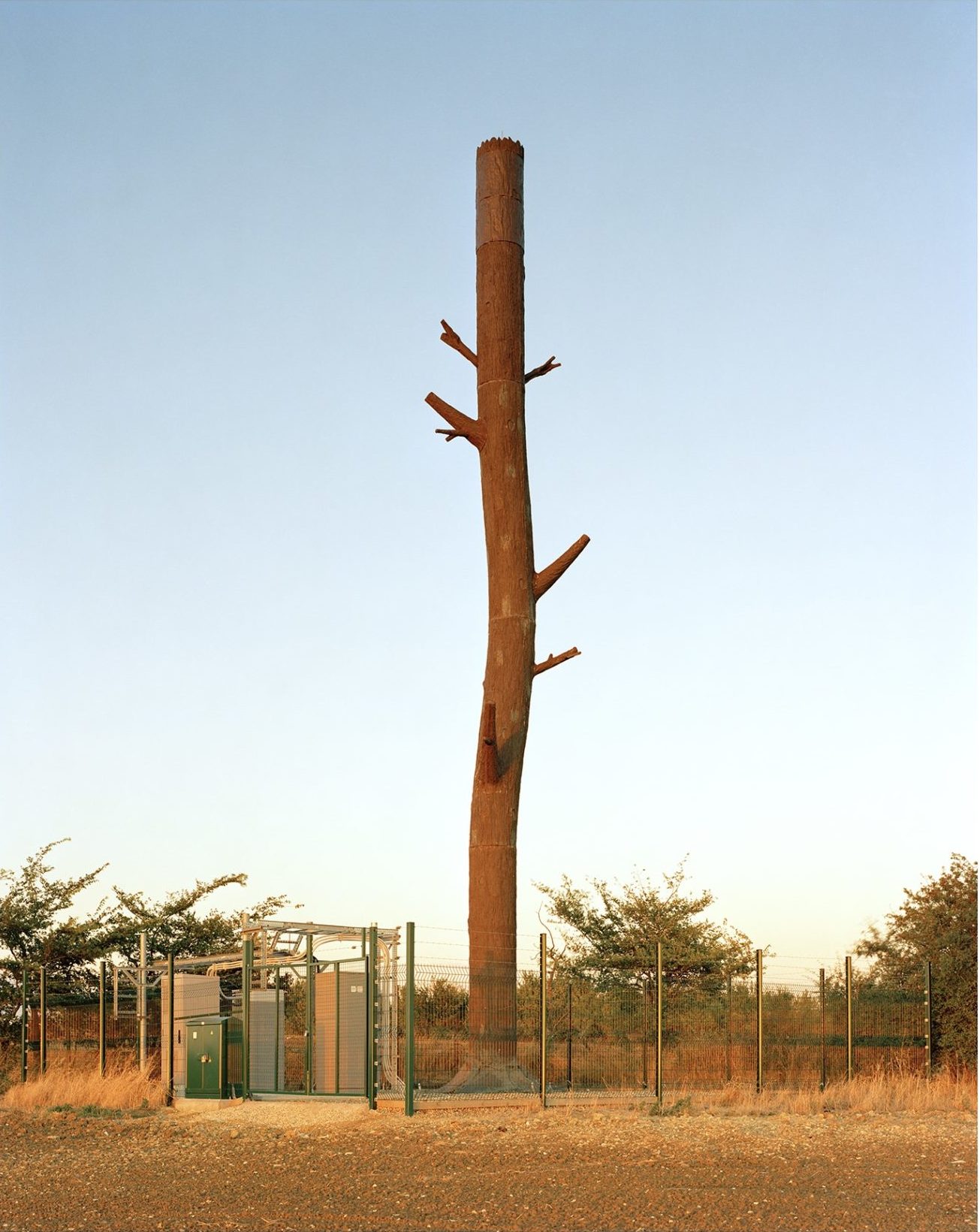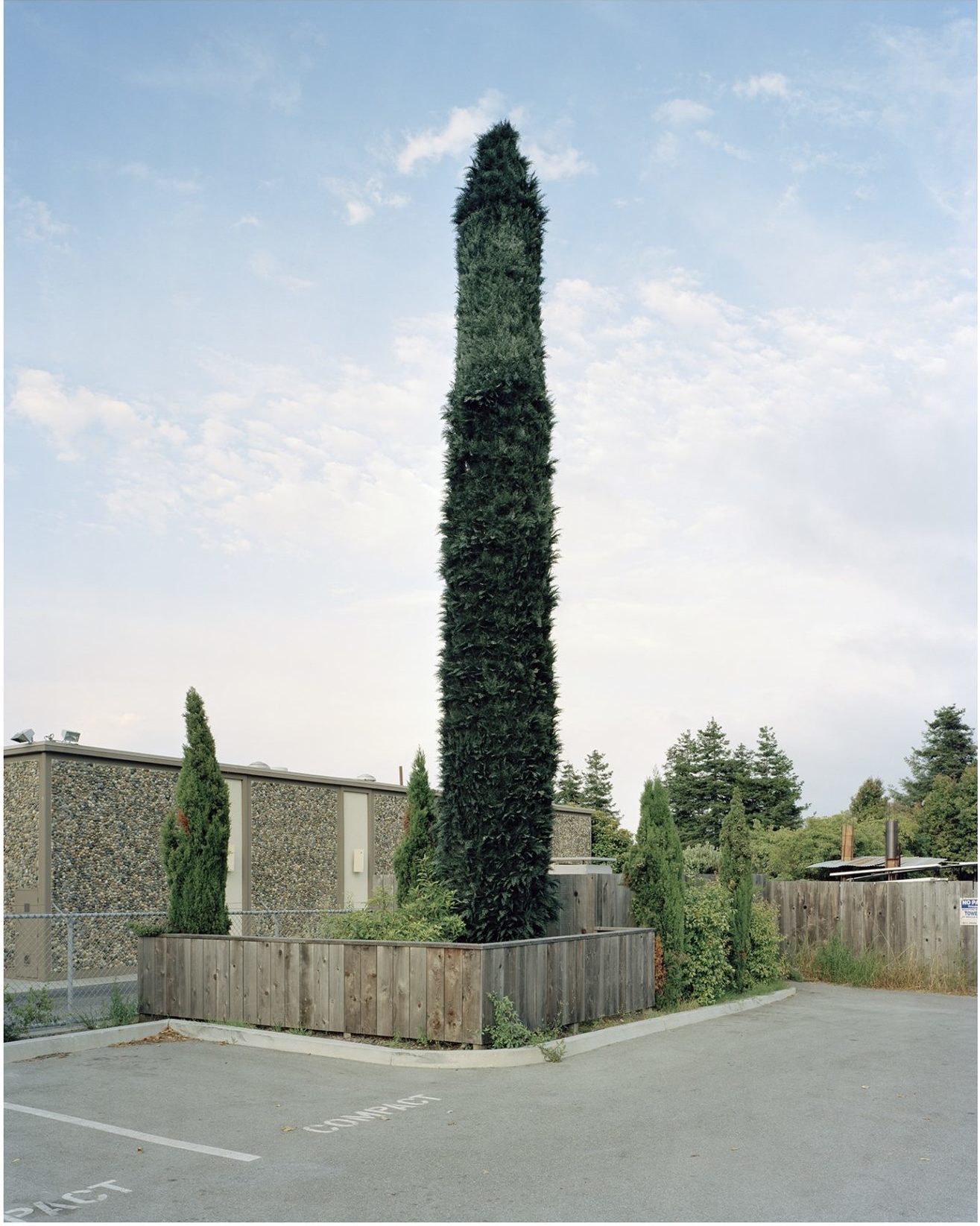
pinetenna (n.)
Robert Voit, Mosselrivier, Hermanus, South Africa, 2006, chromogenic print [courtesy of the artist and ClampArt, New York City]
Share:
n., pl. -ten•nas
Portmanteau word labeling several styles of cellular communications towers designed to resemble various types of evergreen trees. The word pinetenna came to mind immediately upon my first glimpse of such a structure—possibly one overlooking Candler Road in the Atlanta-adjacent village of Decatur, GA. My bemusement might be summed up with a tweak to a title of novelist Richard Llewellyn’s (which I know thanks to its 1941 Hollywood screen adaptation): How green was my uncanny valley? My multipartite answer to that question comes in several shades of green and through one related neologism:
artisanal green: Andrew Messing, president of chief pinetenna maker Larson Camouflage, distinguishes natural (my term) cellular towers from his company’s product by calling the former “visual pollution”; the latter he describes as “really like a work of art” (my emphasis), citing the thousands of hand-painted “needles” that adorn pinetennas. My own admittedly wayward preference for such structures, in situ—against a backdrop of real trees and/or non-CGI sky—is the unconcealed latticework majesty of a cellular tower that looks like a cellular tower (Atlanta has several spectacular examples).
decepticonic green: The Larson Company got into the business of biomimesis through the construction of artificial wildernesses for zoos and aquaria. Unlike fake boulders or manufactured veldt intended to lower the blood pressure of captive apex predators (or to make their actual-apex-predator captors feel less guilty about such beastly bondage), pinetennas and similar masked arrays (also available in saguaro cactus, grain silo, and church steeple styles) occur outside such designatedly made environs. Indeed, the company’s products are intended to blend into whatever suburb/farmland/urban forest/desert they might occupy.
ordinance green: Pinetennas grew (I apply the term guardedly), starting in the early 1990s, from various communities’ desire, usually enforced by law or by mere refusal to greenlight “uncloaked” structures, for cellular capability minus those “unsightly” towers.
pecuniary green: According to a circa 2006 CBS News video segment, a pinetenna can cost four times the price of an undisguised cellular tower. Fast-forward to a 2018 item from the same network, and therein viewers can glimpse other coverage of communities, near each oceanic coast of the mainland US and elsewhere, upset about the estimated doubling of cellular nodes needed to effect rollout of 5G service. Unspoken in that latter CBS segment is what such implementation may mean for pinetennas’ collective future. Are we nicknaming these pricy bits of infrastructure just in time for their becoming outmoded? See: redundant green; possibly obsolete green.
pinetenable: The speculative quality of a pinetenna to achieve total stealth, i.e., to be seen by all human viewers as an actual tree; whether so exalted a counterfeit has yet been manufactured is, de facto, difficult to know, but Larson Camouflage’s website does include video mentioning anecdotes of maintenance workers unable to locate the disguised tower they were dispatched to service. See: Flauxra.
Robert Voit, Mosselrivier, Hermanus, South Africa, 2006, chromogenic print [courtesy of the artist and ClampArt, New York City]
Robert Voit, Hundon, Haverhill, United Kingdom, 2004, chromogenic print [courtesy of the artist and ClampArt, New York City]
Robert Voit, Santa Cruz, California, United States, 2006, chromogenic print [courtesy of the artist and ClampArt, New York City]
This glossary originally appeared in ART PAPERS “Energy Structures,” Spring/Summer 2019.
Edward Austin Hall is the longtime copy editor for ART PAPERS. As Edward Austin Hall, he co-edited the 2013 anthology Mothership: Tales from Afrofuturism and Beyond, which The Magazine of Fantasy and Science Fiction suggested might be “one of the most important sf anthologies of the decade.” His ongoing project as E.A. Hall is concrete poetry that addresses “impossible” colors. Hall’s first novel is forthcoming.


